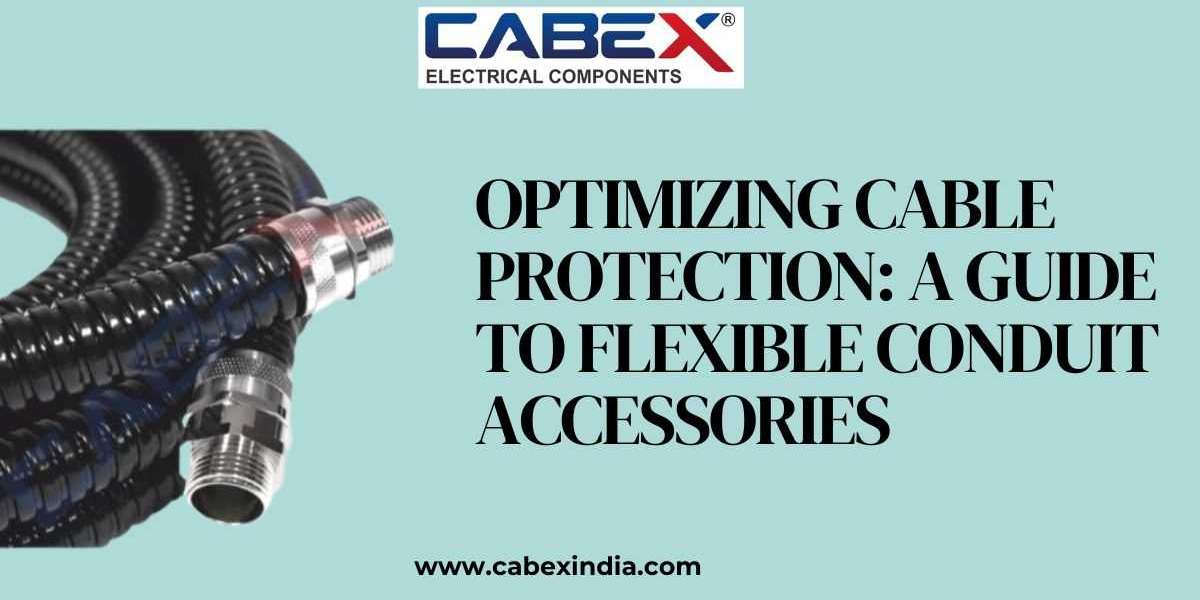Flexible Conduit Accessories: Enhancing Cable Protection and Management
Flexible conduits are widely used in electrical installations to protect cables from mechanical damage, moisture, and other environmental hazards while allowing for easy routing in tight or curved spaces. To optimize the performance of these conduits, a variety of Flexible Conduit Accessories are available. These accessories help secure, support, and maintain the integrity of the cable system, ensuring durability and safety.
In this post, we’ll discuss the most commonly used flexible conduit accessories and their importance in maintaining a robust electrical infrastructure.
What is a Flexible Conduit?
A flexible conduit is a protective tube, typically made from metal, plastic, or a combination of both, that encases electrical cables. Unlike rigid conduits, flexible conduits can bend, making them ideal for applications where cables need to be routed around obstacles or in confined spaces. They are commonly used in industries like construction, automotive, manufacturing, and telecommunications.
Key Benefits of Using Flexible Conduit Accessories
- Enhanced Cable Protection: Accessories like connectors, glands, and fittings ensure that the cables within the conduit are securely held in place, reducing the risk of damage.
- Easy Installation and Maintenance: With the right accessories, installing and maintaining flexible conduit systems becomes faster and more efficient.
- Improved Aesthetic and Organization: Accessories help maintain a neat and organized cable system, preventing clutter and reducing the risk of tangling or damage.
- Extended System Life: By providing additional support, protection, and strain relief, accessories help to extend the life of both the conduit and the cables inside.
Common Flexible Conduit Accessories
- Conduit Connectors
- Straight Connectors: These are used to connect the flexible conduit to an electrical box or enclosure in a straight-line application. They provide a secure attachment and prevent the conduit from moving.
- 90-Degree Connectors: For installations where the conduit needs to bend sharply, 90-degree connectors provide a secure and stable connection without straining the conduit or cables.
- Swivel Connectors: These connectors allow for a greater degree of movement and flexibility, useful in dynamic environments where cables are subject to movement or vibration.
- Conduit Clamps
- Conduit clamps secure the flexible conduit to walls, ceilings, or other surfaces, preventing sagging or movement. They are available in various materials, such as plastic or metal, depending on the installation environment.
- Strut Clamps: Designed to attach conduits to metal framing, strut clamps are often used in industrial applications to keep conduits securely in place.
- Conduit Locknuts
- Locknuts are threaded fasteners used to secure flexible conduits to a junction box or electrical enclosure. They ensure a tight fit and prevent the conduit from loosening over time.
- Conduit Glands
- Conduit glands provide a watertight and dust-tight seal where the conduit enters an enclosure or equipment. They are often used in outdoor or industrial applications where protection against environmental hazards is necessary.
- Conduit Bushings
- Bushings are placed over the exposed end of a flexible conduit to protect the cables from sharp edges that could cause damage. They are especially important when installing conduits in metal enclosures or junction boxes.
- Flexible Conduit Adapters
- These adapters are used to transition between different types of conduits or to connect a flexible conduit to rigid conduits or other system components. They provide versatility in cable management and ensure a secure, adaptable connection.
- Liquid-Tight Fittings
- These fittings are designed to keep water, dust, and other contaminants out of the flexible conduit. Liquid-tight fittings are ideal for outdoor or industrial installations where exposure to moisture or chemicals is common.
- Cable Ties and Clips
- Cable ties and clips are used to bundle and organize cables within the flexible conduit, ensuring that the cables are neatly arranged and don’t shift or become tangled.
- Reducer Fittings
- Reducer fittings allow you to connect conduits of different sizes, ensuring a smooth transition between varying diameters. This is useful in complex installations where different conduit sizes are required for different sections of the system.
Applications of Flexible Conduit Accessories
- Construction: In building projects, flexible conduits are often used to route cables through walls, ceilings, and floors. Accessories like clamps, bushings, and connectors are essential for securing and protecting these conduits.
- Industrial Machinery: Flexible conduit systems in industrial machinery rely on accessories like swivel connectors and liquid-tight fittings to maintain performance in dynamic, high-stress environments.
- Automotive Industry: In vehicles, flexible conduits protect wiring harnesses, and accessories like conduit glands and clamps are essential for securing and organizing these systems.
- Data Centers and Telecommunications: Flexible conduits are used to manage the large volume of cables in data centers, and accessories like locknuts, bushings, and cable ties help ensure that cables are properly routed and protected.
Conclusion
Flexible conduit accessories are key to creating a secure, efficient, and well-protected cable management system. Whether you are working on a construction project, industrial setup, or telecommunications installation, using the right accessories ensures that your flexible conduits offer maximum protection and performance. These accessories not only streamline installation but also provide ongoing benefits by extending the life of your cable systems and reducing the need for maintenance or repairs.







